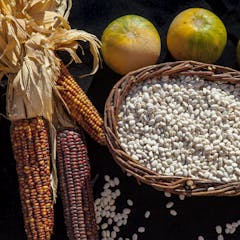
Articles on US Midwest
Displaying 1 - 20 of 26 articles

The last time that these two groups of cicadas emerged from underground together, Thomas Jefferson was president.

If you think of Latino voters as left-leaning Catholics, think again.

Not all cases of La Crosse disease affect the neurological system, but those that do can be severe and sometimes fatal – especially in children.

As the national debate over LGBTQ rights continues, teachers in the Midwest are facing challenges similar to those facing their colleagues elsewhere in the US.

Allowing the sale of gasoline that’s 15% ethanol year-round won’t have much impact on gas prices, but recent research shows that growing corn for fuel affects the climate – for the worse.

The US has required motor fuels to contain 10% biofuels since 2005. As this program nears a key milestone in 2022, farm advocates want to expand it while critics want to pare it back or repeal it.

Climate change predictions often use the year 2100 as an end-point. But it’s important to consider what will happen beyond that, at least up to the year 2500.

Biological control strategies curb pests using other species that attack the invader. A biologist explains why it can take more than a decade to develop an effective biological control program.

One of the largest groups of 17-year cicadas, Brood X, last emerged from underground in 2004. The next generation will arrive starting in April.

The spread of tawny crazy ants may be driven, in part, by their need for calcium. The calcium-rich limestone bedrock of the lower U.S. Midwest may provide ideal conditions for populations to explode.

For centuries Native Americans intercropped corn, beans and squash because the plants thrived together. A new initiative is measuring health and social benefits from reuniting the “three sisters.”

New research shows that one-third of yearly nitrogen runoff from Midwest farms to the Gulf of Mexico occurs during a few heavy rainstorms. New fertilizing schedules could reduce nitrogen pollution.

Being able to identify communities that are susceptible to the pandemic ahead of time would allow officials to target public health interventions to slow the spread of the infection and avoid deaths.

Hurricane and tornado winds spin in circles, but there’s another, equally dangerous storm type where winds barrel straight ahead. They’re called derechos, and are most common in summer.

Restoring former prairies that have been plowed under for farming delivers land, wildlife and climate benefits. But a new study finds that the weather plays a surprising role.

Climate change is making extreme weather events, both hot and cold, more frequent across the Great Lakes region. Weatherizing low-income residents’ homes is an important way to prepare.

At a time when storms are becoming more frequent and severe, relying on levees for flood control can create as many problems as it solves.

Over the past 20 years, Great Lakes water levels have gone from sustained multiyear lows to multiyear highs. Climate change is accelerating the transition between dry phases and wet phases.

Local policies can help immigrants get settled, but there is no way to protect newcomers from national policies or politics.

Recent extreme rains and weather in the Midwest are causing a multitude of problems in the topsoil that much of the nation’s food supply relies on.
